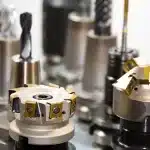“ARTIFICIAL INTELLIGENCE READS EMAILS,UNDERSTANDS PURCHASE ORDERS, AND ENTERS DETAILS INTO SYSTEMS IN ANY FORMAT“
One of the very first steps in the supply chainis receiving an incoming customer Purchase Order, then processing its information. This includes managing its fulfilment at every stage along the supply chain.
The manual entry of Purchase Orders has long been a tedious task targeted for automation. However, the elimination of manual entries along with its errors, has never been acheived until now; the introduction of Artificial Intelligencenow reaches small and medium sized businesses.
Receive Customer Orders in Any Format or Channel
Historically, customer Purchase Orders would have to be received in a specific format in order toautomatethe processing of incoming Purchase Orders. Any slight change to that format would result in perpetual manual corrections making automation a limited application until now.
The change that Artificial intelligence brings is that AI can monitor all customer order formats and channels used. Whether an order is received by email in pdf format, by typed text, byEDI, or by a scanned order, AI can understand all the information once it’s trained on the customer data.
The Benefits of Automating Purchase Orders
Forward thinking high efficiency companies have long chased automation of supply chains and of incoming orders. The benefits can position companies as leaders in their industries, and are related to costs savings, shipment speed, error reductions, and employee morale.
Automation drastically reducesthe time and cost ofhandling Purchase Order data, and production cycles are shortened resulting in faster deliveries. Automation also reduces the risk of errors of manual entries and employees are freed from mundane repetitive work as well as complex mind twisting tasks.
Reading Email Inboxes
An AI algorithm can be applied to monitor an email inbox and be trained with a company’s Purchase Order data. Amazingly, AI can detect and distinguish Purchase Orders from all other emails received in an inbox regardless of their format. This is accomplished by applying Natural Language Processing to unstructured data through all channels.
“” Process Automationis a rapidly emerging technology, slashing the effort for routine tasks and enabling advanced cognitive applications. “–Deloitte Global Services Survey
Entering Order Details into Information Systems
Once an order is identified, its entire content can be understood and entered into any management information system within seconds, whether it be an ERP or accounting system. This process can be an unattended automation, or an attended automation in which case a manager is emailed an approval request before engaging in the next automated steps.
An attended design allows for a quick verification feature before committing any of the data prepared by an automation. Attended designs can be applied in the early deployment phaseand scaled back as its accuracy is proven.
Match Purchase Order with Quotes
An Automation can perform thetime-consuming step of verifying the informationof an order by matchinginformation with an existing customer quote or established stored pricing.
Error reduction plays an important role delivered by AI as consolidation of data between documents is one of its powerful applications. An Automation can be applied to validate Purchase Orders and create instant manager reports.
AI Can Calculate Inventory requirements in seconds
Automation is not limited to customer Purchase Orders and can be implemented throughout the entire supply chain. This includes inventory management whereby an Automated Purchase Order caninstantly calculateinventory requirements, inform managers and place supplier orders.

Reduce Order Management Time Requirements by 50%+
The days of manual order entries are numbered as AI reaches the small and medium businesses. The time-consuming steps of reading and saving emails, order verifications, reconciliations, and manual keying will be replaced by intelligent AI digital assistants.
No Need for New Complex Systems
A well-conceived Automation for Customer Purchase Orders requires no change to any existing software systems in place and can be typically deployed in 30 days. No additional hardware is required as Automations can run on existing systems, and the AI algorithms that require higher resources are directed to powerful cloud servers.
A Purchase Order Automation can be run seamlessly and lives in between existing systems,becoming the connective tissuethat binds those systems. This allows for a seamless management of data by an intelligent robotic process.
AI works with, and Enhances EDI
EDI is a technology that has been around for 20 years+ and was supposed to automate the Purchase Order cycle. Limited by a structured data requirement, any deviation from that structured data results in errors, requiring a manual intervention.
Electronic Data Interface is limited further as it must be received through a unique interface, limiting its scope. The good news is that AI can be applied to enhance EDI by automating the steps where EDI fails to do so. This underscores howAI can be applied to existing systems, evenpartially automated ones such as EDI.

 - EN
- EN  - EN
- EN


